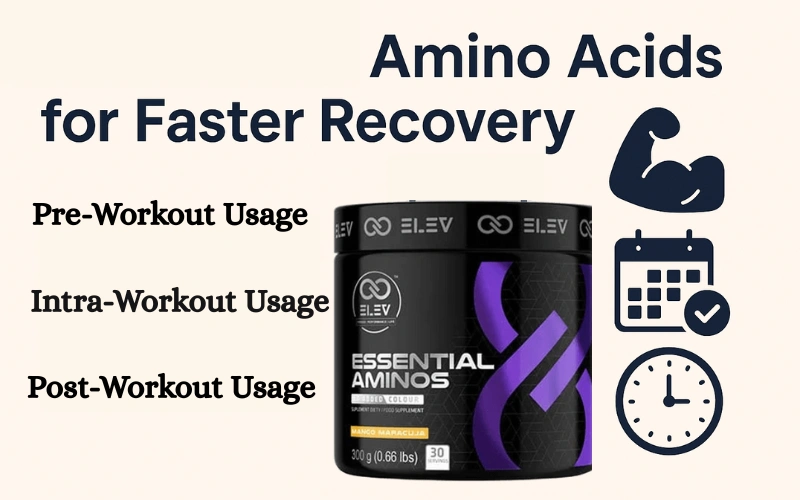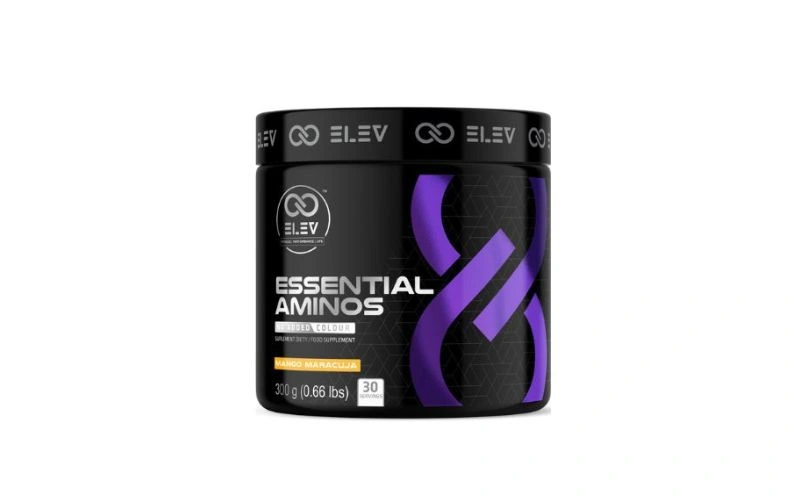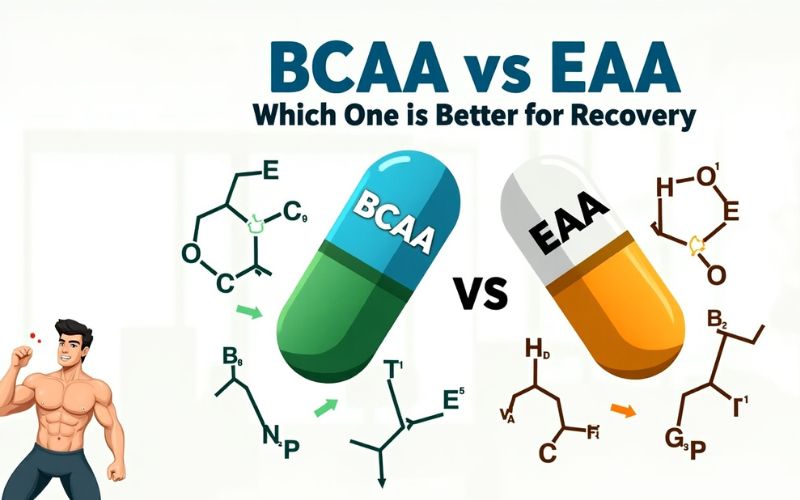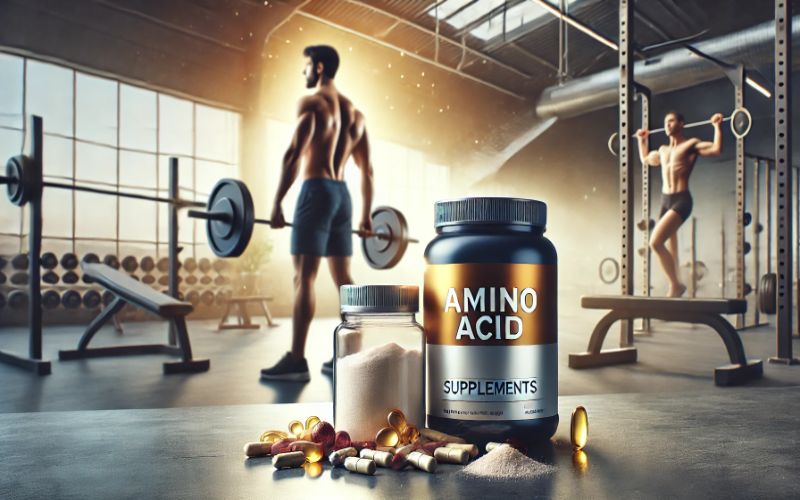A well-structured recovery routine is the difference between progress and plateaus. People searching how to use amino acids for faster recovery usually fall into two categories:
(1) those seeking science-backed clarity on which amino acids actually work, and
(2) those wanting a simple, practical method for using them around training.
This guide ties both sides together giving you the science and the strategy so you can use amino acids in a way that genuinely enhances recovery instead of adding another unnecessary supplement to your stack.
Table of Contents
Understanding the Role of Amino Acids in Muscle Repair
Before discussing how to use amino acids, it’s important to understand why they matter.
Every workout causes micro-tears in the muscle fibers these need to be repaired for the muscles to grow back stronger. Amino acids are the raw building blocks required for this repair process. They help:
- reduce muscle soreness
- accelerate muscle rebuilding
- support enzyme activity
- stabilize energy levels after training
When your diet doesn’t deliver enough amino acids or your body requires faster delivery supplementation fills the gap efficiently. Some individuals prefer multi-amino blends such as Elev Essential Aminos, which provide a complete combination of essential components for optimal muscle repair.
Essential vs. Branched-Chain Amino Acids
Many people get confused because they see different types of amino acids online. Two main groups play a major role in recovery:
Essential Amino Acids (EAAs)
- Support complete muscle protein synthesis
- The body cannot make them, so they must come from diet or supplements
- Ideal for full recovery and tissue repair
Branched-Chain Amino Acids (BCAAs)
- Include leucine, isoleucine, and valine
- Activate the muscle-building pathway
- Reduce exercise-induced fatigue and soreness
If someone wants a simple option, BCAAs can help but EAAs usually offer a more complete benefit because they provide all amino acids needed for repair.
Individuals exploring more advanced combinations often consider formulations like Core Champs Nitrix Xtreme 120 Capsules, which combine nitric oxide support with amino acid benefits.
How to Use Amino Acids for Faster Recovery

No fluff , here’s a practical, easy-to-follow routine.
1. Pre-Workout Usage
Taking amino acids before training helps prepare muscles for stress and reduces muscle breakdown — especially helpful for long sessions, fasted workouts, or high-intensity routines.
Recommended approach:
- 5–10 g of EAAs or BCAAs
- Take 20–30 minutes before training
- Use cold water for faster absorption
- Avoid heavy, high-caffeine pre-workouts (they can delay amino absorption)
Some athletes pair pre-workout amino intake with nitric oxide boosters like Elev Argi Pro to support oxygen delivery and performance during intense sessions.
2. Intra-Workout Usage
Taking amino acids during your workout maintains blood amino levels while muscles are under stress. This is one of the fastest ways to support both performance and recovery.
Recommended approach:
- 5 g of EAAs or BCAAs
- Mix in 700–900 ml of water
- Sip throughout the workout
Ideal for:
- endurance athletes
- bodybuilders during high-volume training
- beginners experiencing heavy soreness
3. Post-Workout Usage
The post-workout window is the most nutrient-sensitive period for muscle repair.
A common question: Do amino acids replace protein powder?
No — but they enhance and speed up recovery when combined with a protein source.
Recommended approach:
- 5–10 g of EAAs within 30 minutes after training
- Combine with a protein shake or meal
- Avoid very high sugar drinks, which may slow absorption
Some individuals use specific amino acids like L-Arginine — available in options such as Gold L-Arginine 1000 — to support blood flow and nutrient delivery during post-training recovery.
4. Daily Use for Recovery Support
Daily amino supplementation isn’t required for everyone, but it’s especially helpful for:
- low-protein diets
- double training sessions
- physically demanding jobs
- extreme soreness
- beginners still adapting to training
Suggested intake:
- 5 g in the morning for overall recovery
- 5 g in the evening after a heavy day
- Always hydrate well — amino acids work best with adequate fluids
Choosing the Right Amino Acid Supplement
The market offers many options — EAAs, BCAAs, glutamine, single-amino blends, and complex recovery formulas.
Best options based on goals:
| Goal | Best Choice |
| Overall recovery | EAAs |
| Reducing soreness & improving performance | BCAAs |
| Immune & gut health | Glutamine |
| Maximum recovery with minimal calories | Flavored EAA/BCAA drinks |
Always choose:
- third-party tested products
- transparent ingredient labels
- supplements that disclose leucine content (crucial for muscle repair)
Elementor Section Suggestion: Comparison Chart Placement
Common Mistakes to Avoid
Even though amino acids are easy to use, a few mistakes reduce their effectiveness:
- Relying on amino acids instead of complete protein foods
- Taking very small doses and expecting major results
- Using them without proper hydration
- Combining with stimulant-heavy pre-workouts
- Ignoring total daily protein intake
Avoiding these ensures you get real, noticeable recovery benefits.
Who Can Benefit the Most?
Amino acids offer the biggest improvements for:
- beginners who get sore after every workout
- athletes doing HIIT, resistance training, or long endurance sessions
- people training fasted in the morning
- those with low-protein diets
- individuals wanting shorter gaps between training sessions
Used consistently, amino acids help the body repair faster, maintain stable energy, and prepare for the next session efficiently.
Final Thoughts
Using amino acids for faster recovery works best when approached with intention — not guesswork. When timed correctly and combined with hydration and balanced nutrition, EAAs and BCAAs significantly improve soreness, energy, and training capacity.
Supplements alone won’t transform recovery but when added strategically, they make the entire process smoother, quicker, and more effective.



























